Related Research Articles

The conservation status of a group of organisms indicates whether the group still exists and how likely the group is to become extinct in the near future. Many factors are taken into account when assessing conservation status: not simply the number of individuals remaining, but the overall increase or decrease in the population over time, breeding success rates, and known threats. Various systems of conservation status exist and are in use at international, multi-country, national and local levels as well as for consumer use.

The northern riffleshell, is a subspecies of freshwater mussel, an aquatic bivalve mollusk in the family Unionidae, the river mussels.

Physa is a genus of small, left-handed or sinistral, air-breathing freshwater snails, aquatic pulmonate gastropod mollusks in the family Physidae.
The Committee on the Status of Endangered Wildlife in Canada is an independent committee of wildlife experts and scientists whose "raison d'être is to identify species at risk" in Canada. It designates the conservation status of wild species.
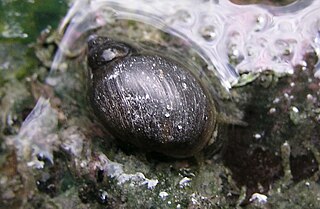
The Banff Springs snail is a species of small air-breathing freshwater snail in the family Physidae.

Lampsilis cariosa,, the yellow lampmussel, is a species of freshwater mussel, an aquatic bivalve mollusk in the family Unionidae, the river mussels.
Cryptomastix devia, common name the Puget Oregonian snail, is a species of air-breathing land snail, a terrestrial pulmonate gastropod mollusc in the family Polygyridae.
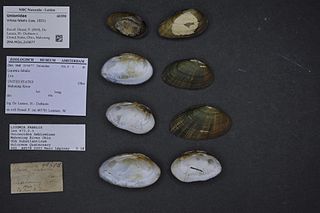
Villosa fabalis, the rayed bean, is a species of freshwater mussel, an aquatic bivalve mollusk in the family Unionidae, the river mussels.
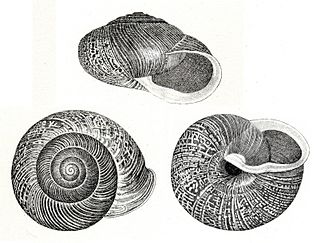
Allogona townsendiana, common name the Oregon forestsnail, is a species of air-breathing land snail, a terrestrial pulmonate gastropod mollusk in the family Polygyridae.
Physella wrighti, common name the hotwater physa, is a species of small air-breathing freshwater snail, an aquatic gastropod mollusk in the family Physidae.
The Hemphillia dromedarius, common name the dromedary jumping-slug, is a species of air-breathing land slugs, terrestrial pulmonate gastropod mollusks in the family Arionidae, the roundback slugs.
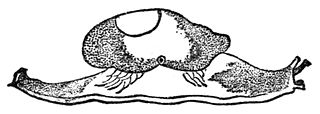
The Hemphillia glandulosa, common name the warty jumping-slug, is a species of air-breathing land slug, a terrestrial pulmonate gastropod mollusk in the family Arionidae.
Gonidea angulata, the western ridged mussel or Rocky Mountain ridged mussel, is a species of freshwater mussel, an aquatic bivalve mollusk in the family Unionidae, the river mussels. It is the only species in the genus Gonidea.
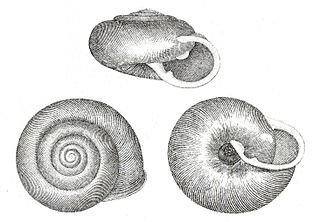
The Appalachina sayana, also known as the Spike-lip Crater, is a species of small, air-breathing, land snails, terrestrial pulmonate gastropod molluscs in the family Polygyridae.
Lyogyrus granum, common name the squat duskysnail, is a species of very small or minute freshwater snail with a gill and an operculum, an aquatic gastropod mollusk in the family Hydrobiidae.
Deroceras hesperium, common name the evening fieldslug, is a species of air-breathing land slug, a terrestrial pulmonate gastropod mollusk in the family Agriolimacidae.
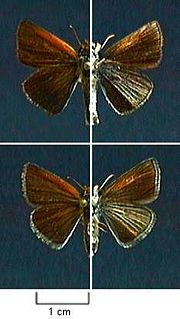
Oarisma poweshiek, the Poweshiek skipperling, is a North American butterfly in the family Hesperiidae (skippers), subfamily Hesperiinae. The range of this species in Canada is restricted to southeastern Manitoba, and in the United States it historically ranged from the Dakotas to the southern Lower Peninsula of Michigan.

Dolphin and Union Caribou, Dolphin and Union caribou herd, Dolphin-Union, locally known as Island Caribou, are a migratory population of barren-ground caribou, Rangifer tarandus groenlandicus, that occupy Victoria Island in the Canadian Arctic Archipelago and the nearby mainland. They are endemic to Canada. They migrate across the Dolphin and Union Strait from their summer grazing on Victoria Island to their winter grazing area on the Nunavut-Northwest Territories mainland in Canada. It is unusual for North American caribou to seasonally cross sea ice and the only other caribou to do so are the Peary caribou who are smaller in size and population. They were listed as Special Concern by Committee on the Status of Endangered Wildlife in Canada (COSEWIC) since May 2004.

Braya pilosa is a long-lived perennial flowering plant of the mustard family known by the common name hairy braya. It has one to many stems 4–12 cm long, erect to ascending to almost prostrate and moderately to densely hairy, and can be distinguished from other Braya species by its large flowers and globose fruits with very long styles. The plant arises from a tuft of basal leaves, with white flowers arranged in dense clusters. Its range is limited to the unglaciated portions of Cape Bathurst and Baillie Islands on the shore of the Beaufort Sea in the Northwest Territories, and it is listed at G2 - imperiled by NatureServe and endangered by the Committee on the Status of Endangered Wildlife in Canada (COSEWIC). Its chief threats are loss of habitat through rapid coastal erosion and saline wash from storm surges, and by melting permafrost.
References
- ↑ COSEWIC. 2005. Canadian Species at Risk. Committee on the Status of Endangered Wildlife in Canada. 64 pp., page 38.
| | This Physidae-related article is a stub. You can help Wikipedia by expanding it. |